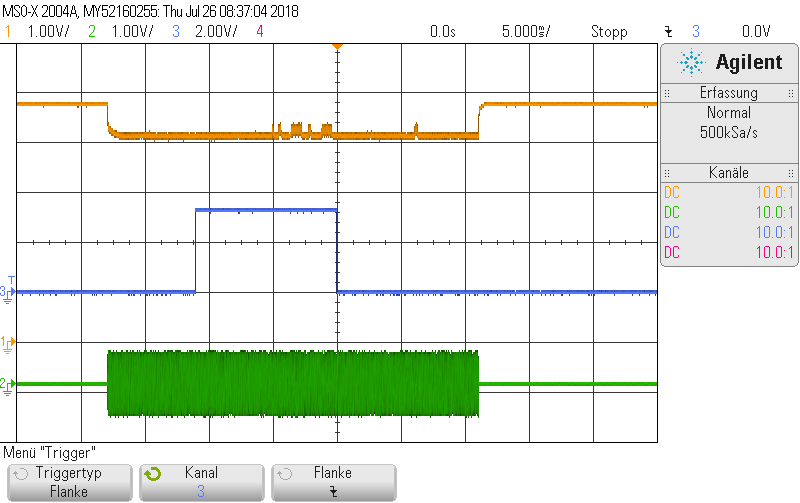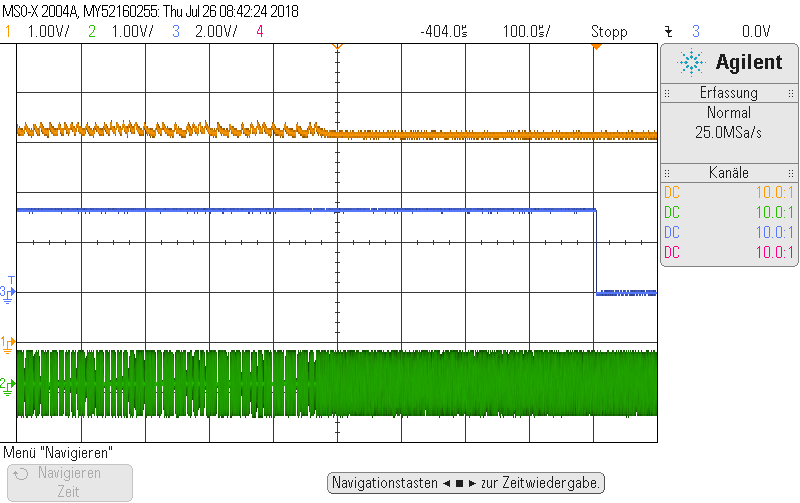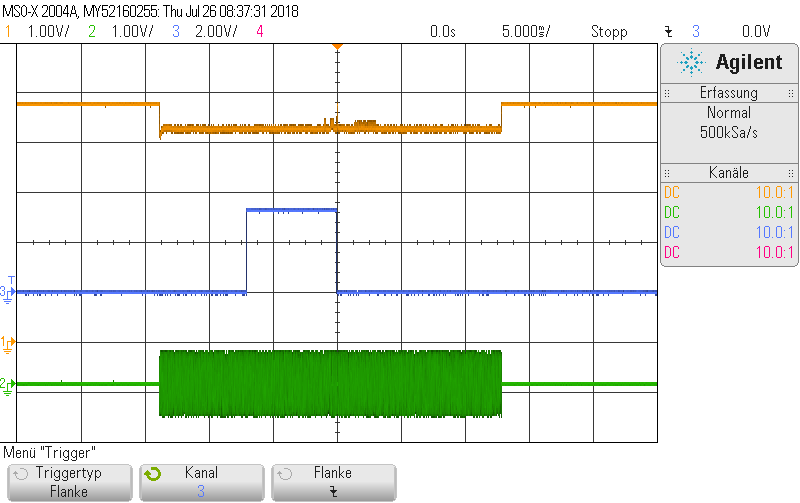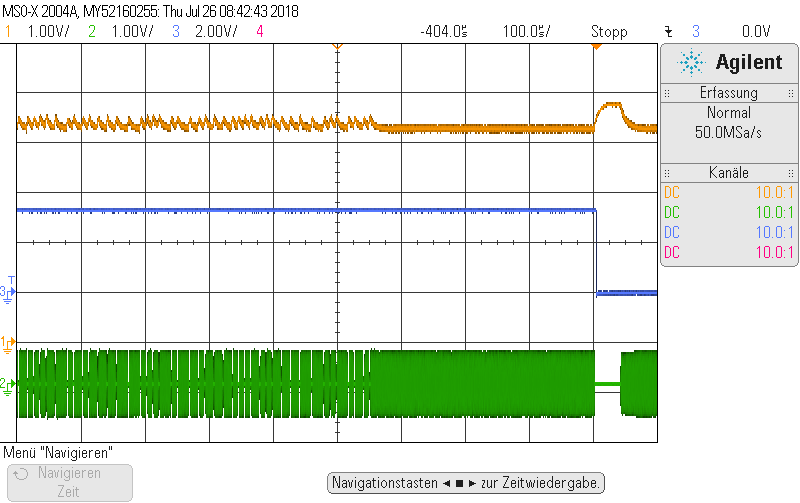Hi support / community,
we need your help. We have TRF7970A in a battery-powered application. We use an external LDO for limiting supply voltage for TRF to 5V, but if battery voltage goes down, the supply for TRF goes also down until 4,3V. Everything works fine on the top and on the bottom of this voltage range, but we have troubles within a small area in the middle, where the Vin for TRF is about 4,6V. Our settings are 5V operation and automatic regulator settings. The problem is: we can not read even UID from a ISO14443A transponder.
Here are the captures of Vin for the hole range of battery voltage. In the middle we have a "dead zone".
To exclude problems with the power supply circle, we replaced it by a good power supply unit but the error still remained.
If we switch from 5V to 3V operation, the the error disapeares. Unfortunately we can not let by 3V because we need more power for reading DESfire incl. encryption.
All other changes on the settings for TRF we have tried, didn't show any improvements.
Our hardware design for TRF is based on the design guide from TI and has no special deviations from it.
Please give us some hints how to solve this problem.
Thanks, Alex






